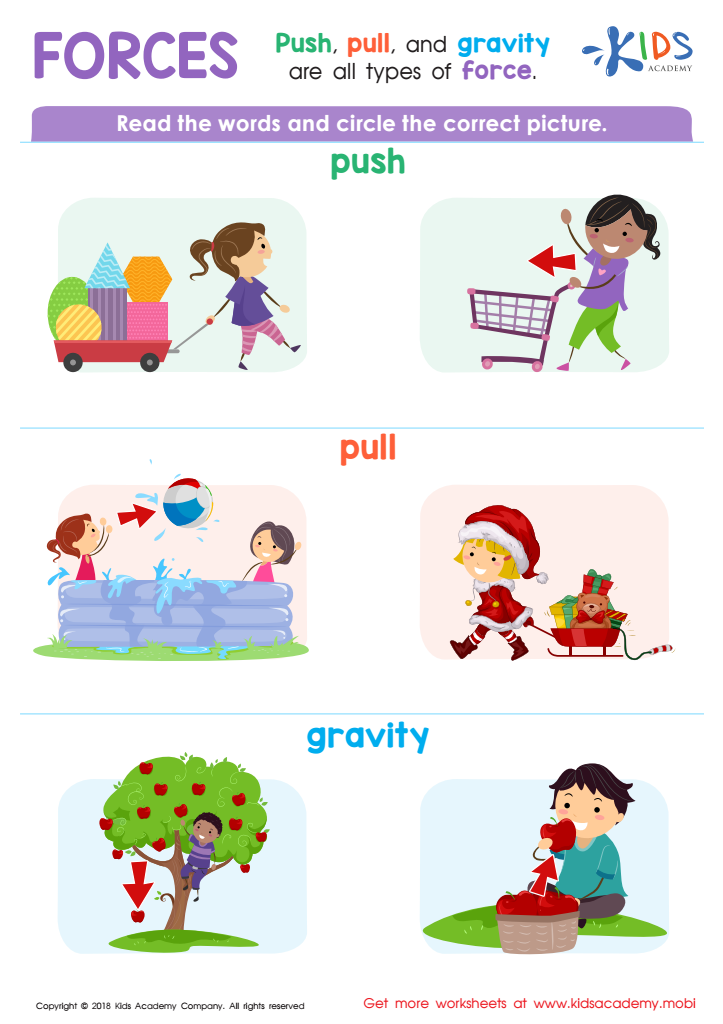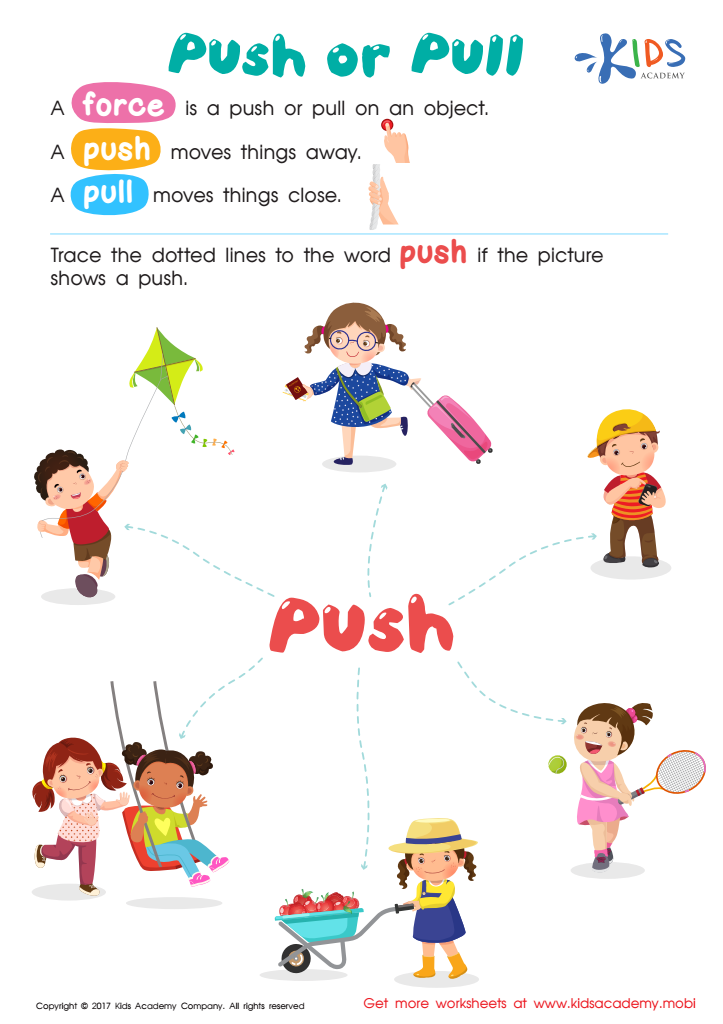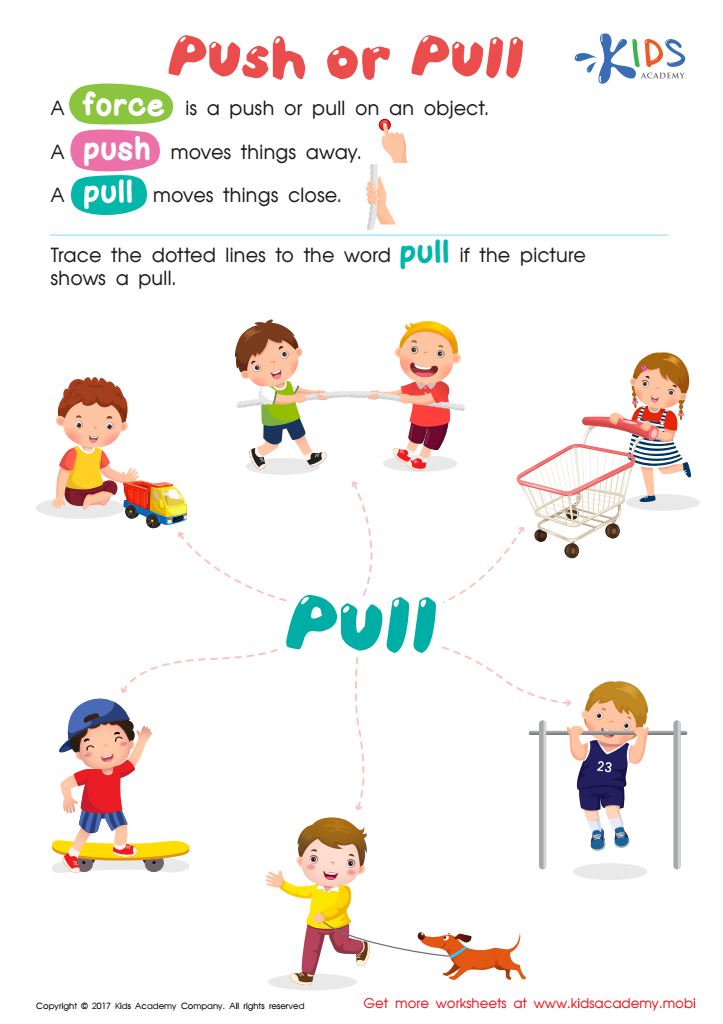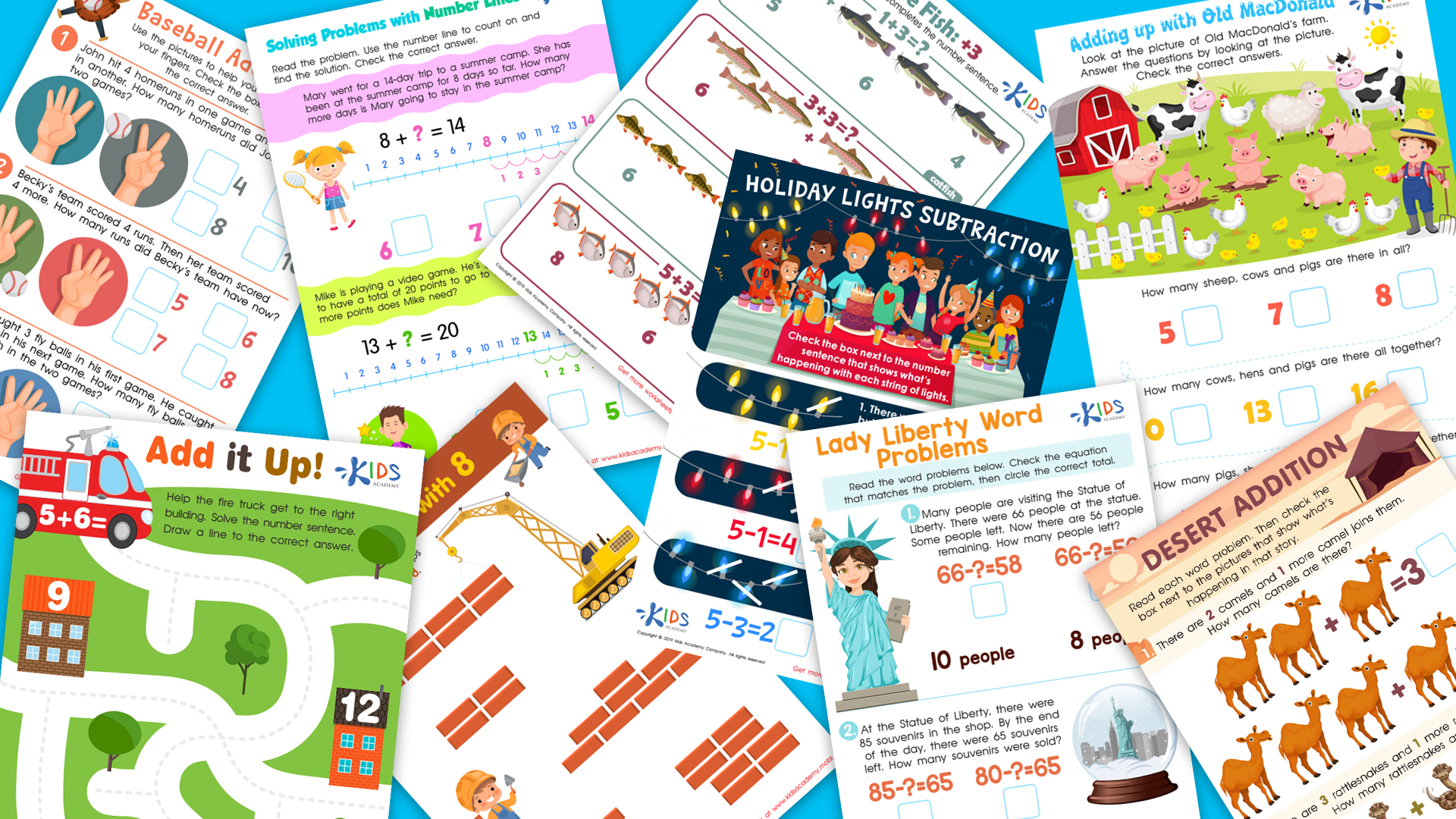Understanding forces Normal Worksheets for Ages 5-7
3 filtered results
-
From - To
"Understanding Forces Normal Worksheets for Ages 5-7" introduces young learners to the basics of physical science in a fun, engaging way. These specially crafted worksheets help children explore the concept of forces, teaching them how different elements interact around them. Packed with visually appealing graphics, simple explanations, and interactive activities, these resources aim to build foundational skills. Kids will learn about push and pull forces, gravity, and friction, enhancing their critical thinking and problem-solving abilities. Ideal for both classroom and home use, these worksheets provide an enjoyable educational experience that stimulates curiosity and propels scientific inquiry.


Forces Worksheet


Push or Pull Worksheet


Pull or Push Worksheet
Understanding forces, including the concept of the "normal force," lays the foundational blocks for young minds, opening doors to the intricate and fascinating world of physics. At ages 5-7, children are curious explorers of their surroundings. Parents and teachers play pivotal roles in nurturing this curiosity. When we explain basic forces like pushing and pulling, we introduce children to ideas that govern everyday activities, enhancing their observational and analytical skills.
The normal force, often simply presented as the force exerted by surfaces to support weights, can be observed when a child learns why a book stays on a table without falling through or why they can slide down playground equipment. By grasping such basic concepts early, students build intuitive understandings that strengthen problem-solving capabilities and critical thinking skills.
Additionally, introducing these ideas promotes a sense of wonder and satisfaction in discovering how the world works. It fuels imagination and the desire to learn more, fostering a love for scientific inquiry. Early exposure to these principles also lays solid groundwork for later studies in science, technology, engineering, and math (STEM). Thus, investing time in teaching forces to young children empowers them with knowledge, curiosity, and academic skills necessary for their future education.
 Assign to My Students
Assign to My Students
















